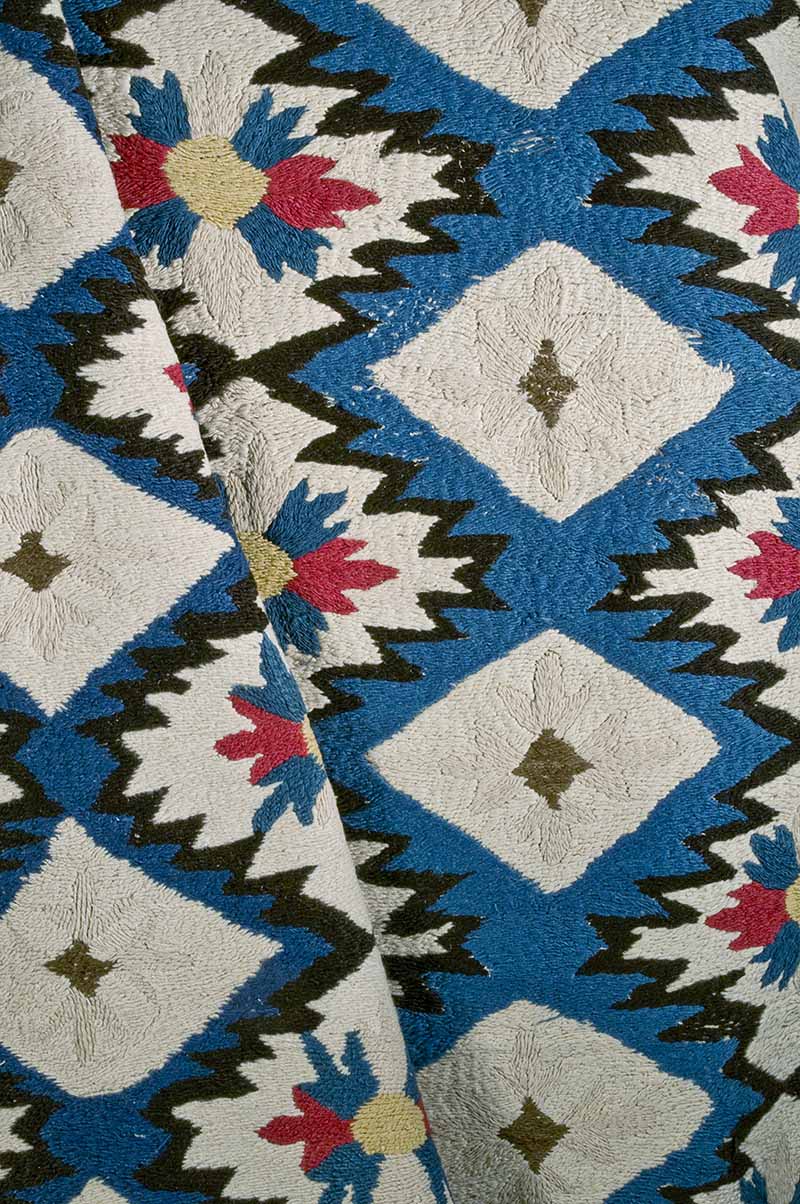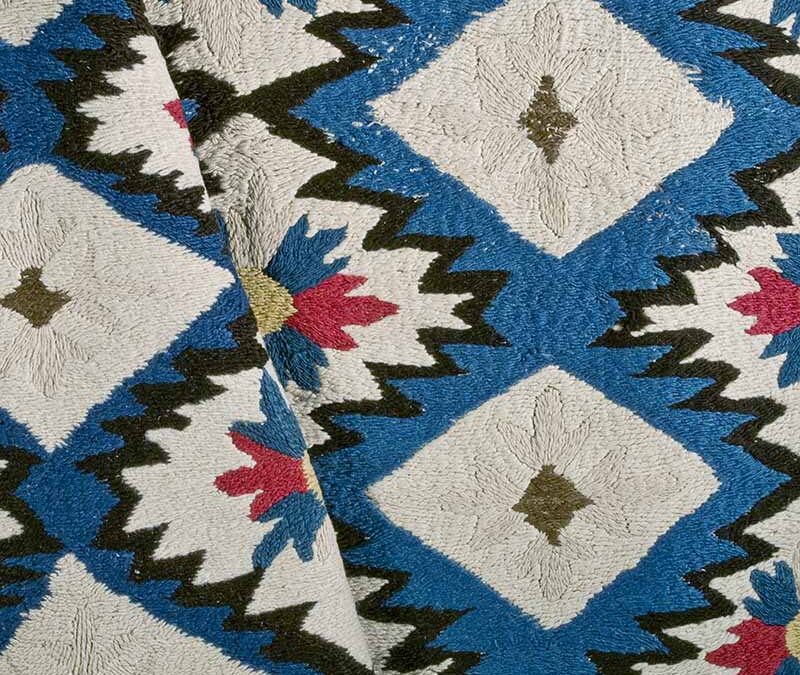
| Maker | Unknown |
| Date of Creation | 1840–60 |
| Location | New Mexico |
| Materials | Wool, cotton, natural dyes |
| Institution | New Mexico History Museum |
| Credit Line | N/A |
| Accession Number | NMHM/DCA 04674.45 |
| Photo Credit | New Mexico History Museum |
This wool bed covering resembles a pieced quilt top but was worked in the colcha embroidery technique, where the embroidery is exclusive to the surface face. The underside is made of plain cotton cloth. Colcha embroidery is a textile art form originating from the ornate mending habits of early Spanish settlers. Colcha embroidery was a popular handwork amongst Hispano women in northern New Mexico and southern Colorado, used to decorate homes and churches throughout the Spanish Colonial period. The technique was used to embellish bed coverings, table and chest covers, wall hangings, and altar cloths, mimicking the visual impact of elaborate crewel work, expensive imported toile textiles, and early calico floral prints from India. It is an economic embroidery style using minimal quantities of spun and dyed churro wool yarn to fill flat decorative areas with a long satin stitch. Domesticated Churro sheep originated with the Spanish Churra sheep obtained by the Diné around the 16th century during the Spanish Colonial period. Colcha textiles are still produced in the region, often as pillow covers and Stations of the Cross hangings and altar covers in rural churches.

